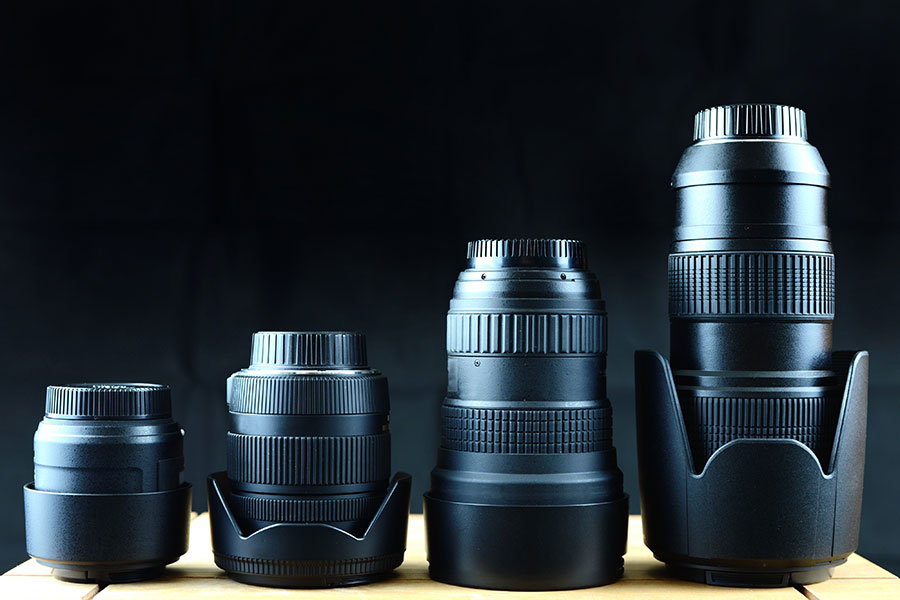A Guide to Buying Your Next Camera Lens
To the layman, two different cameras lenses can seem very similar. However, in reality the result can be very different. With the expense in mind, you’ll need to ensure that the camera lens that you purchase is the perfect fit for your requirements.
After all, any photographer will agree that it’s the lens that makes the difference between a good photograph and an outstanding photograph.
After your original kit lens has run its course, the decision of which lens to purchase and use next can seem pretty daunting. Lenses are generally categorised by their focal range or specific function if they’re a specialist lens. To help you decide which camera lens you should use and purchase next, we’ve detailed the characteristics of the main types of camera lenses and what each type is typically used for.
Ultra-wide lenses
Do you use your camera for creative landscape, architecture or interior photography? If so, you should consider purchasing an ultra-wide camera lens. Ultra-wide lenses typically have a less than 24mm focal length, with the ability to put objects that are close by to the fore and make more distant elements seem even further apart. They can take in a much wider scene and offer creative distortion however they can be some of the more difficult lenses to use. However if you learn to use them properly, you can achieve some really dynamic shots.
Wide angle lenses
The purpose of a wide angle lens is to capture an entire subject, be it a group of people or a specific building, in the frame. Wide angle lenses typically cover a focal length between 24mm and 35mm. The beauty of using a wide angle lens is that you can amplify and enhance the apparent distance between subjects in the foreground and background of a shot.
Many photographers use wide-angle lenses for landscape photos because the lens can pull much more of the landscape into the shot. They can also come in useful for event photographers, especially wedding photographers, who want to take group shots of attendees while incorporating the venue into the shots too.
Standard zoom lenses
The lens that your camera came with would be considered a “standard zoom lens”. A standard zoom lens typically covers a focal range of around 35mm to 70mm. Its view is not too dissimilar from you see with the naked human eye. They can be used for all sorts of photography be it street photography, documentary photography landscape photography or portrait photography.
Telephoto lenses
Telephoto lenses typically have a focal length in excess of 70 mm. They are much heavier and larger in size than other camera lenses. Telephoto lenses offer the ability to focus on a much narrower field of view. They are the perfect choice if you need to focus on specific details or distant objects. They can bring far away objects much closer. Telephoto lenses are the perfect choice for wildlife photography and sports photography where you can bring far away objects, which you can’t or don’t want to get close to, to the fore. They can also be used in portrait or landscape photography to demonstrate scale.
Superzoom lenses
Superzoom lenses are multi-functional lenses, covering a number of different focal lengths, whether you require a wide-angle or telephoto view. They are a very convenient option to have on hand to save you from continuously having to change lenses. They are the perfect choice to bring with you when travelling as it saves you having to weigh down your luggage with multiple camera lenses. They are also a great choice to use for when it might not be safe to continuously change lens e.g. if you are standing on a cliff or if you don’t want to lose your position.
Macro lenses
A macro lens is quite a specialist camera lens, offering focal lengths of between 40mm to 200mm. They are most frequently used in close-up photography for their level of image sharpness. This level of sharpness, coupled with their depth of focal length, also makes macro lenses a popular choice for portrait photography. Macro lenses have a tiny depth of field and so can create some interesting shots, where only a fraction of your subject is in focus.
Key things to consider
When purchasing a camera lens, you not only need to consider the brand and model of your camera but the primary purpose of your photography and the type of shots you want to land. Also consider the size and weight of each lens. There is no point investing in some of the heavier lenses if you travel a lot. When it comes to price, it usually is a direct reflection of the quality of the lens so try not to cut corners by buying a bottom dollar lens as you will be left bitterly disappointed by your shots. Happy camera lens shopping!

